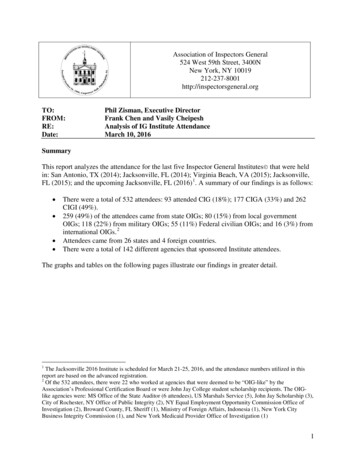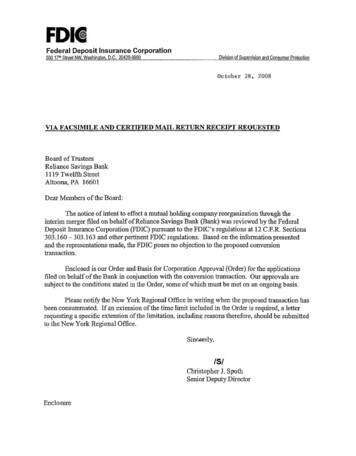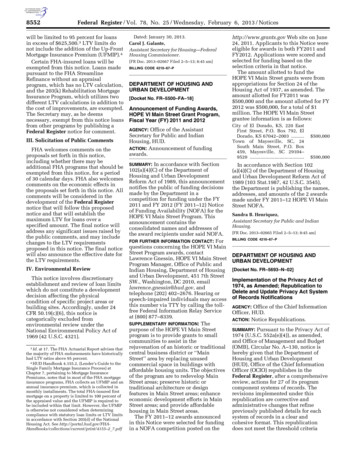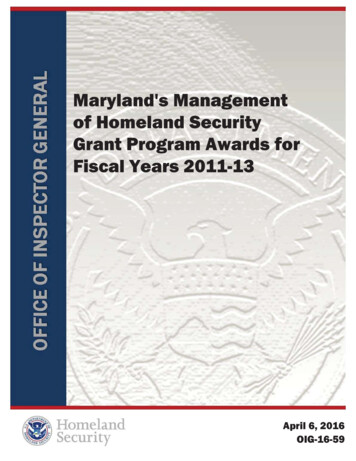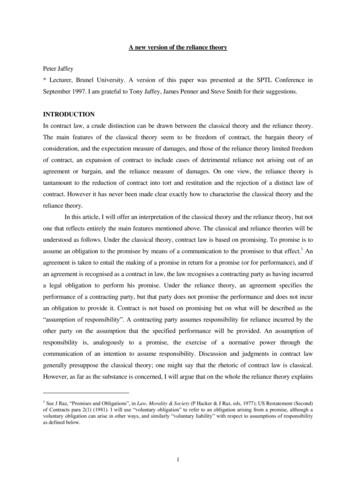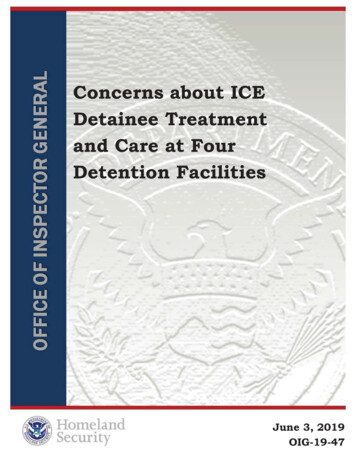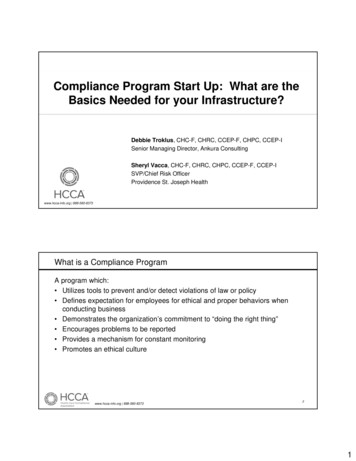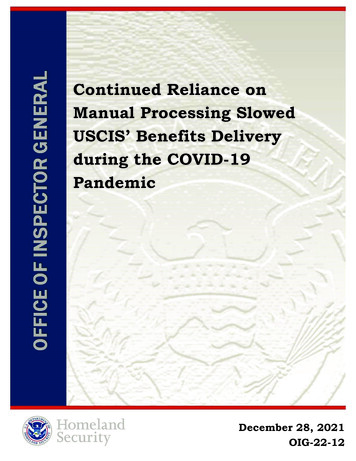
Transcription
Continued Reliance onManual Processing SlowedUSCIS’ Benefits Deliveryduring the COVID-19PandemicDecember 28, 2021OIG-22-12
OFFICE OF INSPECTOR GENERALDepartment of Homeland SecurityWashington, DC 20528 / www.oig.dhs.gov'HFHPEHU MEMORANDUM FOR:The Honorable Ur M. JaddouDirectorU.S. Citizenship and Immigration ServicesFROM:Joseph V. Cuffari, Ph.D.JOSEPH VInspector GeneralCUFFARISUBJECT:Digitally signed byJOSEPH V CUFFARIDate: 2021.12.2716:14:20 -05'00'Continued Reliance on Manual Processing SlowedUSCIS’ Benefits Delivery during the COVID-19PandemicAttached for your action is our final report, Continued Reliance on ManualProcessing Slowed USCIS’ Benefits Delivery during the COVID-19 Pandemic. Weincorporated the formal comments provided by your office.The report contains two recommendations aimed at improving USCIS’electronic processing of benefits. Your office concurred with bothrecommendations. Based on information provided in your response to thedraft report, we consider recommendation 1 open and resolved. Once youroffice has fully implemented the recommendation, please submit a formalcloseout letter to us within 30 days so that we may close the recommendation.The memorandum should be accompanied by evidence of completion of agreedupon corrective actions and of the disposition of any monetary amounts.Recommendation 2 is resolved and closed. Please send your response orclosure request to OIGAuditsFollowup@oig.dhs.gov.Consistent with our responsibility under the Inspector General Act, we willprovide copies of our report to congressional committees with oversight andappropriation responsibility over the Department of Homeland Security. Wewill post the report on our website for public dissemination.Please call me with any questions, or your staff may contact Bruce Miller,Deputy Inspector General for Audits, at (202) 981-6000.Attachmentwww.oig.dhs.gov
DHS OIG HIGHLIGHTSContinued Reliance on Manual ProcessingSlowed USCIS’ Benefits Delivery during the COVID-19 PandemicDecember 28, 2021Why We DidThis AuditU.S. Citizenship andImmigration Services (USCIS)processes millions ofimmigration andnaturalization benefit requestseach year. On March 18,2020, in response to theCOVID-19 pandemic, USCIStemporarily closed its officesand halted in-person services.We conducted this audit todetermine the effectiveness ofUSCIS’ technology systems toprovide timely and accurateelectronic processing ofbenefits while offices wereclosed or operating at reducedcapacity as a result of theCOVID-19 pandemic.What WeRecommendWe made tworecommendations to improvethe effectiveness of USCIS’electronic processing.For Further Information:Contact our Office of Public Affairs at(202) 981-6000, or email us hs.govWhat We FoundUSCIS’ technology systems and infrastructure enabledsome electronic processing of benefits to continue fromMarch 2020 through May 2021, despite offices beingclosed or operating at reduced capacity during theCoronavirus disease 2019 (COVID-19) pandemic.USCIS used its Electronic Immigration System tocontinue electronically processing 17 of the 102 types ofbenefits it delivers. USCIS also relied on variousoperational flexibilities, such as virtual interviews andbiometrics reuse, to continue benefits delivery duringthis time. We attribute these successes to USCIS’recent planning efforts to ensure continuity ofoperations, as well as its ongoing efforts to transition toan electronic processing environment.USCIS’ primary operational challenge, however, was itscontinued reliance on paper files to process and deliverbenefits. USCIS had limited capability to electronicallyprocess more than 80 types of benefits, which stillrequired some manual workflows and paper files tocomplete cases. Recurring technology performanceissues and equipment limitations further constrainedUSCIS employees’ productivity. We attribute thesechallenges to funding cuts and lost fee revenue thatlimited spending during this time.These challenges further increased processing timesand resulted in a backlog of 3.8 million cases as of May2021. Although USCIS digitized key benefits in recentyears, it must further eliminate manual workflows andpaper file dependency to achieve its 5-year plan toimprove benefit processing times.USCIS ResponseUSCIS concurred with both of our recommendations.OIG-22-12
OFFICE OF INSPECTOR GENERALDepartment of Homeland SecurityTable of ContentsBackground . 1Results of Audit . 4USCIS Successfully Processed Some Benefits during the COVID-19Pandemic. 4USCIS’ Continued Reliance on Manual Processing Impeded Operationsduring the COVID-19 Pandemic . 8Processing Times and Case Backlogs Increased during the COVID-19Pandemic. 15Recommendations. ixA: Objective, Scope, and Methodology . 18B: USCIS Comments to the Draft Report . 20C: USCIS Digitized Forms as of April 2021. 23D: Office of Audits Major Contributors to This Report . 24E: Report Distribution . 25AbbreviationsASCCLAIMS ww.oig.dhs.govApplication Support CenterComputer Linked Application Information ManagementSystem 3Coronavirus disease 2019Electronic Immigration SystemField Operations DirectorateImmigration Records and Identity Services Directorateinformation technologyNational Appointment Scheduling SystemOffice of Information TechnologyRefugee, Asylum, and International Operations DirectorateService Center Operations DirectorateU.S. Citizenship and Immigration Servicesvirtual desktop infrastructurevirtual private networkOIG-22-12
OFFICE OF INSPECTOR GENERALDepartment of Homeland SecurityBackgroundWithin the Department of Homeland Security, U.S. Citizenship andImmigration Services (USCIS) processes millions of immigration andnaturalization benefit requests each year. During fiscal year 2020, USCIScompleted more than 7.6 million applications, petitions, and requests. On anaverage day, USCIS:xxxxadjudicates more than 26,000 immigration benefit requests;grants asylum to 40 persons already in the United States;fingerprints and photographs 10,000 people; andwelcomes 2,000 new citizens at naturalization ceremonies.To accomplish its mission, USCIS has approximately 19,000 employeesassigned to more than 200 offices around the world. Within USCIS, the FieldOperations Directorate (FOD), Service Center Operations Directorate (SCOPS),and the Refugee, Asylum and International Operations Directorate (RAIO) areresponsible for timely and accurate processing of immigration andnaturalization cases. Also, the Immigration Records and Identity ServicesDirectorate (IRIS) oversees collection of applicant biometrics. Table 1 lists keyoffices under these directorates and the general services each provides.Table 1. Key USCIS Offices and the Services ProvidedField OfficesFOD’s 88 field offices provide scheduled appointments forinterviews, oath ceremonies, and applicant information services.Asylum OfficesRAIO’s 10 asylum offices conduct scheduled interviews for onlyasylum cases.Application SupportCentersIRIS manages 131 application support centers that scheduleappointments to collect biometrics for applications.Service CentersSCOPS’ 5 service centers process a large variety of applicationsand petitions.Source: DHS Office of Inspector General (OIG)-created using USCIS informationUSCIS adjudicates and delivers 102 different types of immigration benefits,including petitions, applications, and requests for citizenship and lawfulpermanent residence; family-based immigration; immigrant and non-immigrantemployment; international adoptions; and humanitarian programs. Ordinarily,USCIS personnel interact directly with the public in USCIS field offices, asylumoffices, and application support centers, conducting in-person interviews,naturalization oath ceremonies, and informational appointments. However, onMarch 11, 2020, the World Health Organization declared the Coronaviruswww.oig.dhs.gov1OIG-22-12
OFFICE OF INSPECTOR GENERALDepartment of Homeland Securitydisease 2019 (COVID-19) an international pandemic.1 According to DHS, thepersistent opportunity for infection to spread makes any biological incident athreat to the DHS workforce and its mission. The nature of USCIS’ publicfacing mission places personnel in frequent contact with the community,potentially including persons infected with, or exposed to, COVID-19.USCIS quickly adapted its mission and adjusted day-to-day operations as thepandemic began. To protect its workforce and continue its mission-essentialfunctions,2 USCIS temporarily closed its offices, suspended in-person services,3and authorized full-time telework for most of its workforce on March 18, 2020.On June 4, 2020, USCIS began a phased reopening of its offices and beganrestoring some in-person services, subject to pandemic-related protocols andrestrictions. Figure 1 shows the timeline for USCIS’ response to COVID-19.Figure1. USCIS’ COVID-19 Response Timelineg3/11/20COVID-19pandemicdeclared3/18/20 Officesclosed Servicessuspended Full-timetelework6/4/20 Officesbeginreopening LimitedservicesrestoredSource: DHS OIG analysis of USCIS-provided dataAs part of the benefit adjudication and delivery process, USCIS uses a widevariety of information technology (IT) systems, databases, and tools that obtaininformation from case management systems. Three primary systems used forcase processing are:xElectronic Immigration System (ELIS) – USCIS’ digital case processingplatform that integrates enterprise services and data from other sourcesystems. USCIS personnel use ELIS for end-to-end electronic casemanagement, document review and upload, document production,workload distribution, and workflow management. At the time of thisaudit, ELIS was capable of processing 17 benefits types/forms, as listedin Appendix C. Of the nearly 7.6 million cases USCIS completed in FY2020, more than 2.8 million were processed electronically using ELIS.1 DHS defines a pandemic as a worldwide epidemic when a new virus, bacteria, or otherpathogen emerges, for which humans have little or no immunity, and can be readily infected.2 USCIS defines mission essential functions as a limited set of Government functions that mustbe continued and may be interrupted for only very short periods of time.3 USCIS’ in-person services include collection of fingerprints and photographs, applicantinterviews, and naturalization oath ceremonies.www.oig.dhs.gov2OIG-22-12
OFFICE OF INSPECTOR GENERALDepartment of Homeland SecurityxGlobal (not an acronym) – USCIS’ case management system for asylumand refugee adjudications4 and pre-screening interviews. Deployed in2018, Global is a cloud-based system that replaced two legacymainframe systems5 and digitized certain processing requirements, suchas applicant status checks, electronic form review and generation ofdocuments, and collection of electronic signatures during asyluminterviews.xComputer Linked Application Information Management System 3(CLAIMS 3) – a legacy case management system USCIS staff use for caseprocessing and adjudication of more than 50 benefit types and forms.We conducted this audit to determine the effectiveness of USCIS’ technologysystems to provide timely and accurate electronic processing of immigrationand naturalization benefits during office closures and reduced servicecapacities during the COVID-19 pandemic.USCIS adjudicates asylum and refugee applications submitted on Form I-589, Application forAsylum and for Withholding of Removal; I-590, Registration for Classification as Refugee; orForm I-881, Application for Suspension of Deportation or Special Rule Cancellation of Removal.5 Asylum Pre-Screening System (APSS) and Refugees, Asylum, and Parole System (RAPS).4www.oig.dhs.gov3OIG-22-12
OFFICE OF INSPECTOR GENERALDepartment of Homeland SecurityResults of AuditUSCIS’ technology systems and infrastructure enabled some electronicprocessing of benefits to continue from March 2020 through May 2021, despiteoffices being closed or operating at reduced capacity during the COVID-19pandemic. USCIS used its ELIS to continue electronically processing 17 of the102 types of benefits it delivers. USCIS also relied on various operationalflexibilities, such as virtual interviews and biometrics reuse, to continuebenefits delivery during this time. We attribute these successes to USCIS’recent planning efforts to ensure continuity of operations, as well as its ongoingefforts to transition to an electronic processing environment.USCIS’ primary operational challenge, however, was its continued reliance onpaper files to process and deliver benefits. USCIS had limited capability toelectronically process more than 80 types of benefits, which still required somemanual workflows and paper files to complete cases. Recurring technologyperformance issues and equipment limitations further constrained USCISemployees’ productivity. We attribute these challenges to funding cuts and lostfee revenue that limited spending during this time.These challenges further increased processing times and resulted in a backlogof 3.8 million cases as of May 2021. Although USCIS digitized key benefits inrecent years, it must further eliminate manual workflows and paper filedependency to achieve its 5-year plan to improve benefit processing times.USCIS Successfully Processed Some Benefits during the COVID19 PandemicUSCIS continued processing a limited number of benefits using ELIS, alongwith other technologies and workarounds, that enabled virtual operations tocontinue during the COVID-19 pandemic. We attribute USCIS’ ability tomaintain benefits processing and delivery to its effective planning and rapidengagement by leadership.ELIS Provided Electronic Processing for a Limited Number of BenefitsELIS provided USCIS with end-to-end electronic capability to process 17 of the102 benefits and forms it manages. According to USCIS officials, when officesclosed on March 18, 2020, USCIS shifted employee efforts toward completingthe benefits and form types that could be processed electronically. Using ELIS,USCIS personnel worked on benefit types not requiring in-person interviews orcases that could be adjudicated without requiring physical interaction withwww.oig.dhs.gov4OIG-22-12
OFFICE OF INSPECTOR GENERALDepartment of Homeland Securityapplicants. According to some senior USCIS officials and adjudication officers6around the country, ELIS was instrumental to staff continuing benefits deliveryduring the pandemic. During April and May 2020, while USCIS offices wereclosed, field office personnel processed more than 108,000 cases using ELIS,which included more than 11,200 naturalization applications and more than21,600 family-based applications to register permanent residence or adjuststatus,7 two of the highest volume applications in USCIS’ total backlog of 3.1million cases.USCIS personnel also benefited from recent updates to ELIS. During 2020 andinto 2021, USCIS’ Office of Information Technology (OIT) continued to enhanceELIS capabilities to better-support remote work, including the electronicdistribution of digital case workloads across all field offices and service centersin any geographic region. OIT also upgraded ELIS’ tablet-based features toenable digital signatures and electronic scoring of English and civics testing ofnaturalization applicants during video interviews.Other Technologies and Flexibilities Enabled Benefits Delivery Operationsto ContinueUSCIS also quickly enhanced certain procedures and introduced workaroundsto address pandemic-related challenges to its operations. From March 18 untilJune 3, 2020, USCIS offices were closed to the public, in-person appointmentswere canceled, and no new appointments were scheduled.8 As its officesreopened and services resumed, USCIS authorized and introduced revisedoperational procedures, such as video interviews9 for certain naturalization,asylum, and refugee cases, naturalization oath ceremony flexibilities, and thereuse of certain biometrics data.10 Supervisors and staff from manydirectorates and program offices we met with said remote work options andflexibilities were critical to continuing operations while USCIS offices wereclosed. The following examples illustrate USCIS’ use of technology andmodified procedures.Adjudication officers review benefit applications and determine applicant eligibility forbenefits such as immigration, employment, and legal status.7 N-400, Application for Naturalization and I-485, Application to Register Permanent Residence orAdjust Status.8 USCIS continued to schedule emergency in-person appointments through its Contact Center.9 USCIS defines a video interview as an interview in which an applicant and interviewing officerare in different physical spaces within a field office and are communicating using videotechnology.10 According to USCIS, biometrics reuse occurs when it uses fingerprints, a photograph, or asignature, individually or in combination, collected for one application, petition, or benefitrequest, to satisfy an associated biometric requirement on a different request.6www.oig.dhs.gov5OIG-22-12
OFFICE OF INSPECTOR GENERALDepartment of Homeland SecurityxVideo Interviews – FOD and RAIO offices began using select technology toconduct remote interviews during the pandemic. Video interviewsinclude technology equipment such as computers and monitors, iPadtablets, web cameras, microphones, printers, and internal or headsetspeakers. As of January 2021, FOD had conducted more than 42,000video interviews for naturalization cases, and by February 2021, RAIO’sAsylum Division had completed more than 14,000 interviews using videointerview technology.xBiometrics Reuse – On May 6, 2020, USCIS changed its biometrics policyto mitigate Application Support Center (ASC) closures and subsequentreopening at reduced capacity due to the pandemic. Using specificrequirements,11 USCIS authorized fingerprint and photograph reuse forpersons submitting applications, petitions, or benefit requests, withoutthe need for in-person identity verification at an ASC. During the firsthalf of FY 2021, USCIS reused biometrics from more than 1.1 millionapplicants, enabling adjudications to continue during ongoing pandemicbased limitations.xNaturalization Oath Ceremonies – In May 2020, field offices introducedabbreviated, nontraditional naturalization oath ceremony procedures toaddress a backlog of approximately 110,000 ceremony appointmentscanceled due to office closures. Prioritizing the oldest pending cases,USCIS authorized a variety of flexible arrangements based on individualpreferences and feasibility. These included small-group ceremonies;counter ceremonies, which occurred at field office information counterstations; and curbside ceremonies, which occurred outside a field officewhile guests remained in their cars. By August 2020, USCIS hadadministered the oath of allegiance to nearly every naturalizationapplicant whose ceremony had been postponed during office closures.As the pandemic continued, USCIS continued to use these flexiblepractices to promote safety and efficiency.Additionally, some directorates and local USCIS offices implemented specificworkarounds to enable work to continue remotely. For example, most FOD,RAIO, and SCOPS offices employed a curbside file pickup option forteleworking employees. To execute this process, participating local officesdesignated specific areas and procedures to retrieve paper files and suppliesRequirements include 1) the case is otherwise ready for adjudication but cannot proceed dueto lack of current biometrics; 2) the applicant previously submitted fingerprints and aphotograph at an ASC or other authorized site; 3) there is an exact file number, name, anddate of birth match between the pending filing and previous filing from which the biometricswere collected; and 4) the applicant was scheduled for an ASC appointment before USCIS officeclosures or filed a benefit request with a biometrics requirement after March 18, 2020.11www.oig.dhs.gov6OIG-22-12
OFFICE OF INSPECTOR GENERALDepartment of Homeland Securityfrom their offices. Officials from SCOPS and RAIO said they created an onlinetool using USCIS’ Enterprise Collaboration Network for adjudication officers tosubmit and manage requests for curbside file pick-up, drop-off, or homedelivery to receive their workloads. This enabled employees to scheduleappointments for file pickup and return, supporting safety and pandemicrestrictions.Success during COVID-19 Pandemic Attributed to USCIS’ Recent PlanningEffortsWe attribute USCIS’ ability to continue operations to its detailed pandemicplan,12 as well as its continued efforts to transition away from paper-basedprocessing. DHS requires its components, including USCIS, to maintain a planthat provides for the continuity of mission-essential functions and identifiesspecific activities to protect the workforce.13 In accordance with departmentalguidance, during March 2020, USCIS updated its detailed pandemic plan toensure operations would continue. The plan laid out specific guidance andrequirements intended to protect the workforce and the public during asignificant health emergency. The plan also specified USCIS’ mission-essentialfunctions, including:xxxissuing immigration benefits and documentation;providing analysis of time-sensitive immigration information; andidentifying national security or public safety sensitive immigration cases.Likewise, USCIS has taken steps to transition from a paper-based to a digitalenvironment and to improve data accessibility and workload management. InFY 2018, USCIS revised its technology transformation approach14 andrestructured program management to align system development efforts withthe operational directorates. Following remediation efforts15 and an operationalassessment,16 USCIS determined ELIS met operational needs and performed asrequired to support USCIS’ mission. According to an IT program official,working primarily with FOD and SCOPS, OIT prioritized the highest volumecase workloads to develop new capabilities for end-to-end electronic processingusing ELIS.USCIS Pandemic and Emerging Infectious Disease Workforce Protection Plan, No. OP 094-002,March 15, 2020.13 Department of Homeland Security Pandemic and Emerging Infectious Disease WorkforceProtection Plan, Version 2.0, October 7, 2016.14 USCIS Office of Information Technology Transformation Program Electronic Immigration SystemConcept of Operations, Sept. 19, 2017.15 Remediation efforts included resetting contractor expectations; improving I-90 and N-400forms for processing; moving to a standard development and operations model; establishinggovernance and documentation; and improving testing and database architecture.16 USCIS Operational Assessment 4, Transformation Program – ELIS, May 7, 2019.12www.oig.dhs.gov7OIG-22-12
OFFICE OF INSPECTOR GENERALDepartment of Homeland SecurityHaving these plans in place enabled USCIS leadership to publish timely,detailed policies and procedures to guide its implementation of operationalmodifications. On March 12, 2020, USCIS implemented a telework policywaiver, authorizing its employees to work from home or other approvedlocations away from the office. This enabled employees to perform missionessential services that did not require in-person contact with applicants.Subsequently, during May 2020, USCIS published a management directive17governing its temporary biometric reuse policy to mitigate ASC closures duringthe COVID-19 pandemic. Likewise, FOD and RAIO issued guidelines toadminister video interview procedures.18USCIS’ Continued Reliance on Manual Processing ImpededOperations during the COVID-19 PandemicUSCIS’ primary operational challenge during the COVID-19 pandemic was thecontinued need for USCIS personnel to handle paper to process cases.Although USCIS has made progress toward digital transformation, most benefitapplications, petitions, and forms still require paper files and documents tosupport manual workflows. As of April 2021, more than 80 benefits and formsstill required some manual processing by USCIS staff.Cases that could not be completed by electronic processing were delayed byoffice closures and, upon reopening, staff’s limited access to facilities. Toillustrate, USCIS’ field offices completed approximately 50 percent fewer casesfrom March to June 2020 during temporary office closures, as compared withthe same timeframe during 2019. From March through June 2020, USCISprocessed approximately 335,000 cases.19 From March through June 2019,the same period 1 year before, field offices processed more than 670,000 cases.Figure 2 shows the comparison of total cases processed by USCIS’ field officesfrom March through June 2019 and March through June 2020.USCIS Management Directive No. 119-011, Biometric Policy Changes to Mitigate ApplicationSupport Center (ASC) Closures During the COVID-19 Pandemic, May 6, 2020.18 FOD Video Interview Processing Guide; FOD Office-to-Office Supplemental Processing Guide; andUSCIS Asylum Division Video-facilitated Interviews Standard Operating Procedures.19 This figure includes cases processed both manually and electronically by USCIS field offices.17www.oig.dhs.gov8OIG-22-12
OFFICE OF INSPECTOR GENERALDepartment of Homeland SecurityFigure 2. Total Cases Processed by Field OfficesMarch to June 2019 and March to June 2020Source: DHS OIG analysis of USCIS-provided dataUSCIS experienced a decline of approximately 33 percent in the pace of caseprocessing in 2020, even after offices reopened. From July 2020 throughFebruary 2021, field offices processed, on average, nearly 110,300 cases eachmonth — nearly 55,000 fewer cases per month than the same 8-month periodthe year before. Figure 3 shows FY 2019 and FY 2020 processing times,measured in months, for cases with the largest backlogs20 pendingadjudication.20 USCIS defines backlog as the volume of pending applications that exceed the level ofacceptable pending cases. The number of acceptable pending cases is compared to the volumeof applications received during target time periods for processing each type of application. Forexample, if the Form N-400 processing time is 5 months, the acceptable pending volume isequal to the last 5 months of applications received.www.oig.dhs.gov9OIG-22-12
OFFICE OF INSPECTOR GENERALDepartment of Homeland SecurityFigure 3. Benefit Case Processing Times in Months,FY 2019 and FY 202021Source: DHS OIG analysis of USCIS dataSenior officials from the adjudicative directorates (FOD, RAIO, and SCOPS)agreed that USCIS’ biggest operational challenge was the dependency on paperto process cases. Although office facilities began reopening in June 2020, staffhad limited opportunities to obtain paper files and to perform a number ofrequired in-office duties. For example, between March 2020 and May 2021, asthe COVID-19 pandemic continued, staff had limited opportunities toaccomplish traditional processing tasks such as printing and scanningdocuments, routing paper documents for supervisory review and signature,and mailing forms to applicants. Also, USCIS employees did not always havethe necessary access to paper files and documents. Adjudication officers weinterviewed stated that accessing paper files during office closures significantlyslowed their pace of benefits delivery.USCIS officials and adjudication officers said USCIS’ other case managementsystems, Global and CLAIMS 3, supported partial electronic processing ofbenefits during the pandemic, but neither system was capable of end-to-endelectronic processing like ELIS. In particular:xThe introduction of Global reportedly improved adjudication officers’ability to complete their work electronically during the pandemic.21 The numbers represented processing times for the following forms: N-400, Application forNaturalization; I-130, Petition for Alien Relative; I-485, Application to Register PermanentResidence or Adjust Status; I-539, Application to Extend/Change Nonimmigrant Status; and I589, Application for Asylum and for Withholding of Removal.www.oig.dhs.gov10OIG-22-12
OFFICE OF INSPECTOR GENERALDepartment of Homeland SecurityAccording to USCIS, Global reduced manual data entry by 70 percentover prior systems, improved automation of security and backgroundchecks, and reduced response times up to 95 percent. However, Globalis not capable of end-to-end electronic processing. According to RAIO’stechnology program office, electronic processing of Form I-589,Application for Asylum and for Withholding of Removal, is scheduled forimplementation in Global during FY 2022, but the process will not beentirely paperless, as applicants will still be permitted to submit paperapplications and supporting documents. Also, according to RAIO, FormsI-590, I-881, I-730, and I-131 still require paper-based processing.xUSCIS has added a number of electronic capabilities22 to CLAIMS 3 sinceFY 2019 and has plans to modernize system capabilities with a webbased solution. However, the mainframe-based system reliespredominantly on paper-based workflows and is incapable of real-timeinterface with other USCIS systems. For example, adjudication officersuse CLAIMS 3 to view files and documents electronically, but notices andresponses must be generated using
VPN virtual private network COVID-19 Coronavirus disease 2019 . www.oig.dhs.gov . OIG-22-12 . OFFICE OF INSPECTOR GENERAL . Department of Homeland Security . Background . Within the Department of Homeland Security, U.S. Citizenship and Immigration Services (USCIS) processes millions of immigration and
